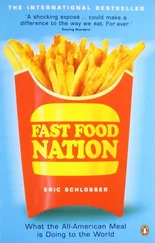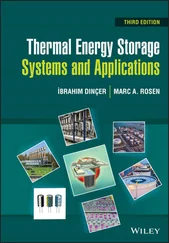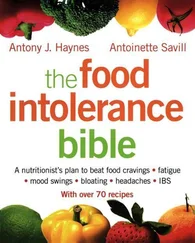55. F. G. Chizoba Ekezie, D. W. Sun, Z. Han, and J. H. Cheng, “Microwave-assisted food processing technologies for enhancing product quality and process efficiency: A review of recent developments,” Trends in Food Science and Technology , vol. 67. 2017, doi: 10.1016/j.tifs.2017.05.014.
56. G.-A. Ştefănoiu, E. E. Tănase, A. C. Miteluţ, and M. E. Popa, “Unconventional Treatments of Food: Microwave vs. Radiofrequency,” Agric. Agric. Sci. Procedia , vol. 10, 2016, doi: 10.1016/j.aaspro.2016.09.024.
57. S. Chandrasekaran, S. Ramanathan, and T. Basak, “Microwave food processing-A review,” Food Research International , vol. 52, no. 1. 2013, doi: 10.1016/j.foodres.2013.02.033.
58. P. Lopez-Iturri, S. De Miguel-Bilbao, E. Aguirre, L. Azpilicueta, F. Falcone, and V. Ramos, “Estimation of radiofrequency power leakage from microwave ovens for dosimetric assessment at nonionizing radiation exposure levels,” Biomed Res. Int. , vol. 2015, 2015, doi: 10.1155/2015/603260.
59. Q. Guo, D. W. Sun, J. H. Cheng, and Z. Han, “Microwave processing techniques and their recent applications in the food industry,” Trends in Food Science and Technology , vol. 67. 2017, doi: 10.1016/j.tifs.2017.07.007.
60. H. Jiang, M. Zhang, A. S. Mujumdar, and R. X. Lim, “Drying uniformity analysis of pulse-spouted microwave–freeze drying of banana cubes,” Dry. Technol. , vol. 34, no. 5, 2016, doi: 10.1080/07373937.2015.1061000.
61. A. Álvarez, J. Fayos-Fernández, J. Monzó-Cabrera, M. J. Cocero, and R. B. Mato, “Measurement and correlation of the dielectric properties of a grape pomace extraction media. Effect of temperature and composition,” J. Food Eng. , vol. 197, 2017, doi: 10.1016/j.jfoodeng.2016.11.009.
62. M. Vinatoru, T. J. Mason, and I. Calinescu, “Ultrasonically assisted extraction (UAE) and microwave assisted extraction (MAE) of functional compounds from plant materials,” TrAC - Trends in Analytical Chemistry , vol. 97. 2017, doi: 10.1016/j.trac.2017.09.002.
63. K. Knoerzer, P. Juliano, and G. Smithers, Innovative Food Processing Technologies: Extraction, Separation, Component Modification and Process Intensification . 2016.
64. G. C. Jeevitha, H. B. Sowbhagya, and H. U. Hebbar, “Application of microwaves for microbial load reduction in black pepper ( Piper nigrum L.),” J. Sci. Food Agric. , vol. 96, no. 12, 2016, doi: 10.1002/jsfa.7630.
65. M. C. Pina-Pérez, M. Benlloch-Tinoco, D. Rodrigo, and A. Martinez, “ Cronobacter sakazakii Inactivation by Microwave Processing,” Food Bioprocess Technol. , vol. 7, no. 3, pp. 821–828, 2014, doi: 10.1007/s11947-013-1063-2.
66. S. Kar, A. S. Mujumdar, and P. P. Sutar, “ Aspergillus niger inactivation in microwave rotary drum drying of whole garlic bulbs and effect on quality of dried garlic powder,” Dry. Technol. , vol. 37, no. 12, 2019, doi: 10.1080/07373937.2018.1517777.
67. P. Piyasena, C. Dussault, T. Koutchma, H. S. Ramaswamy, and G. B. Awuah, “Radio Frequency Heating of Foods: Principles, Applications and Related Properties - A Review,” Critical Reviews in Food Science and Nutrition , vol. 43, no. 6. 2003, doi: 10.1080/10408690390251129.
68. F. Salazar, S. Garcia, M. Lagunas-Solar, Z. Pan, and J. Cullor, “Effect of a heat-spray and heat-double spray process using radiofrequency technology and ethanol on inoculated nuts,” J. Food Eng. , vol. 227, 2018, doi: 10.1016/j. jfoodeng.2017.12.017.
69. F. Marra, L. Zhang, and J. G. Lyng, “Radio frequency treatment of foods: Review of recent advances,” Journal of Food Engineering , vol. 91, no. 4. 2009, doi: 10.1016/j.jfoodeng.2008.10.015.
70. S. Ozturk et al., “Inactivation of Salmonella Enteritidis and Enterococcus faecium NRRL B-2354 in corn flour by radio frequency heating with subsequent freezing,” LWT , vol. 111, 2019, doi: 10.1016/j.lwt.2019.04.090.
71. S. Liu et al. , “Microbial validation of radio frequency pasteurization of wheat flour by inoculated pack studies,” J. Food Eng. , vol. 217, 2018, doi: 10.1016/j. jfoodeng.2017.08.013.
72. S. Hu, Y. Zhao, Z. Hayouka, D. Wang, and S. Jiao, “Inactivation kinetics for Salmonella typhimurium in red pepper powders treated by radio frequency heating,” Food Control , vol. 85, 2018, doi: 10.1016/j.foodcont.2017.10.034.
73. S. G. Jeong and D. H. Kang, “Influence of moisture content on inactivation of Escherichia coli O157:H7 and Salmonella enterica serovar Typhimurium in powdered red and black pepper spices by radio-frequency heating,” Int. J. Food Microbiol. , vol. 176, 2014, doi: 10.1016/j.ijfoodmicro.2014.01.011.
74. Y. Zhao, W. Zhao, R. Yang, J. Singh Sidhu, and F. Kong, “Radio frequency heating to inactivate microorganisms in broccoli powder,” Food Qual. Saf. , vol. 1, no. 1, 2017, doi: 10.1093/fqs/fyx005.
75. M. Mazen Hamoud-Agha and K. Allaf, “Instant Controlled Pressure Drop (DIC) Technology in Food Preservation: Fundamental and Industrial Applications,” in Food Preservation and Waste Exploitation , 2020.
76. T. Allaf, C. Besombes, I. Mih, L. Lefevre, and K. Allaf, “Decontamination of Solid and Powder Foodstuffs using DIC Technology,” in Advances in Computer Science and Engineering , 2011.
77. S. Mounir, C. Besombes, N. Al-Bitar, and K. Allaf, “Study of instant controlled pressure drop DIC treatment in manufacturing snack and expanded granule powder of Apple and Onion,” Dry. Technol. , vol. 29, no. 3, 2011, doi: 10.1080/07373937.2010.491585.
78. A. Demirdöven and T. Baysal, “Optimization of ohmic heating applications for pectin methylesterase inactivation in orange juice,” J. Food Sci. Technol. , vol. 51, no. 9, 2014, doi: 10.1007/s13197-012-0700-5.
79. W. Il Cho, J. Y. Yi, and M. S. Chung, “Pasteurization of fermented red pepper paste by ohmic heating,” Innov. Food Sci. Emerg. Technol. , vol. 34, 2016, doi: 10.1016/j.ifset.2016.01.015.
80. M. Kumar, Jyoti, and A. Hausain, “Effect of ohmic heating of buffalo milk on microbial quality and tesure of paneer,” Asian J. Dairy. Foods Res. , vol. 33, no. 1, 2014, doi: 10.5958/j.0976-0563.33.1.003.
81. J. H. Ryang et al ., “Inactivation of Bacillus cereus spores in a tsuyu sauce using continuous ohmic heating with five sequential elbow-type electrodes,” J. Appl. Microbiol. , vol. 120, no. 1, 2016, doi: 10.1111/jam.12982.
82. S. H. Park, V. M. Balasubramaniam, S. K. Sastry, and J. Lee, “Pressure-ohmicthermal sterilization: A feasible approach for the inactivation of Bacillus amyloliquefaciens and Geobacillus stearothermophilus spores,” Innov. Food Sci. Emerg. Technol. , vol. 19, 2013, doi: 10.1016/j.ifset.2013.03.005.
83. R. Somavat, H. M. H. Mohamed, Y. K. Chung, A. E. Yousef, and S. K. Sastry, “Accelerated inactivation of Geobacillus stearothermophilus spores by ohmic heating,” J. Food Eng. , vol. 108, no. 1, 2012, doi: 10.1016/j. jfoodeng.2011.07.028.
84. X. Tian, Q. Yu, W. Wu, and R. Dai, “Inactivation of microorganisms in foods by ohmic heating: A review,” J. Food Prot. , vol. 81, no. 7, pp. 1093–1107, 2018, doi: 10.4315/0362-028X.JFP-17-343.
85. R. Pereira, J. Martins, C. Mateus, J. Teixeira, and A. Vicente, “Death kinetics of Escherichia coli in goat milk and Bacillus licheniformis in cloudberry jam treated by ohmic heating,” Chem. Pap. , vol. 61, no. 2, 2007, doi: 10.2478/ s11696-007-0008-5.
86. S. Leizerson and E. Shimoni, “Effect of ultrahigh-temperature continuous ohmic heating treatment on fresh orange juice,” J. Agric. Food Chem. , vol. 53, no. 9, 2005, doi: 10.1021/jf0481204.
Читать дальше












